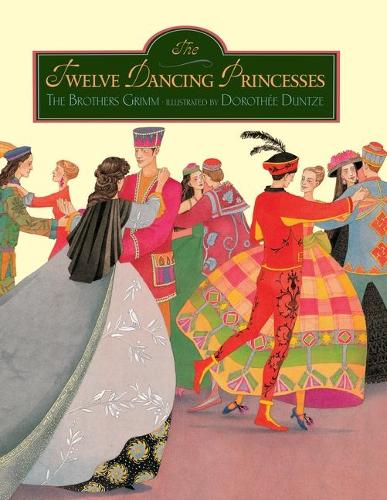
The Twelve Dancing Princesses
Publishing Details
The Twelve Dancing Princesses
By (Author) The Brothers Grimm
Illustrated by Dorothee Duntze
North-South Books
North-South Books
1st June 2013
United States
Classifications
Children
Fiction
398.210943
Physical Properties
32
Width 225mm, Height 290mm
387g
Description
Every night the king locks his daughters in their room. Yet every morning their shoes are full of holes. Where do they go night after night, and what do they do to wear out their shoes Many princes have tried to solve the mystery, but all have failed. Now it is a poor soldiers turn. Will he be able to discover the secret of the twelve dancing princesses
Reviews
From Publishers WeeklyUsing a light touch and a fanciful, indeterminate setting (is it medieval is it Edwardian is it Venetian), Duntze freshens up an old favorite, the tale of a crafty soldier who outwits a dozen princesses determined to dance the night away. Her sherbet-hued palette, her elegantly precise lines and her evident pleasure in details add up to luscious fantasy, easily incorporating the magical elements of the story (a cloak that renders the wearer invisible, trees of silver, leaves of diamonds). Even the endpapers, scattered with a dozen pairs of tiny stylish shoes, hint of wonder. From start to finish, a pure delight. Ages 5-8.
Copyright 1995 Reed Business Information, Inc.
From School Library JournalKindergarten-Grade 4With the aid of a magic cloak, a soldier discovers how and why 12 princesses dance holes in their shoes every night. Bell's translation of the classic tale is superb. Her polished, lucid narrative is beautifully enhanced by Duntze's elegant, stylized paintings done in a cool, pale palette. Each princess has unique features, enabling readers to follow individuals through the book, and the artist manages to convey their personalities as well. Shoes are literally scattered throughout, from the endpapers to the jester who juggles an assortment of footwear to the boats that bear the princesses to the enchanted castle. There are a few minor inconsistencies: the cut of one of the princess's gowns seems to change and she loses her ornate hat as well, and not all the gowns on the cover match those inside. While this may seem nitpicky, detail is one of the qualities that make the illustrations so enticing. Still, there is plenty here for avid fairy tale fans to pore over. A refreshing new look for an old favorite that will be at home in any collection.Donna L. Scanlon, Lancaster County Library, PA
Copyright 1996 Reed Business Information, Inc.
Author Bio
Jacob and Wilhelm Grimm were born in 1785 and 1786 near Frankfurt, Germany. In their early twenties, they began the linguistic studies that would culminate in their collected editions of folk- and fairy tales. They got their stories from peasants and villagers, and sometimes from already-published works from other cultures. Jacob did much of the research; Wilhelm put the stories into literary form.
Dorothee Duntze is a published adaptor, author, editor, and an illustrator of children's books.
